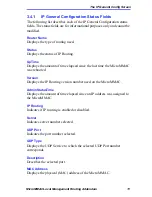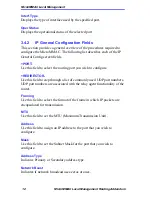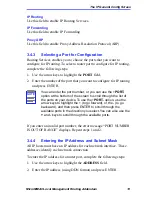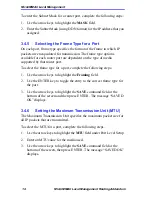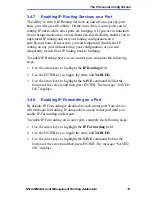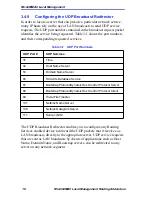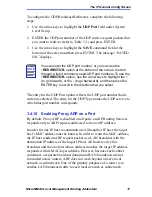
Bridging and Routing
MicroMMAC Local Management Routing Addendum
3
2.3
BRIDGING AND ROUTING
Bridging —
Bridging creates separate segments on a network. The
bridge examines a portion of each network frame called the header. This
header contains control information for the frame. The bridge compares
the destination address of the frame to a table of source addresses. If the
address indicates that the sending station and the destination station are
on the same side of the bridge, the frame is discarded. If the addresses do
not indicate that, then the bridge forwards the frame to its other
interface(s).
During this process, the bridge formulates a table that allows it to identify
which stations are connected to which LAN segment. The destination
addresses of received frames are compared to this address table and
decisions are made to discard or forward based on the outcome.
Transparent bridging allows locally connected devices to send frames to
all devices as if they are all on the same LAN.
Bridging allows frames to be sent to all destinations regardless of the
network protocols used. It also allows protocols that cannot be routed
(such as NETBIOS) to be forwarded, and optimizes internetwork capacity
by localizing traffic on LAN segments. A bridge extends the physical
reach of networks beyond the limits of each LAN segment. Filters are
used to increase network security in bridged networks.
Routing —
Routing provides a way to transfer user data from source to
destination over different LAN and WAN links using one or more
network protocol formats. Routing relies on routing address tables to
determine the best path for each packet. Routing tables can be seeded
(i.e., addresses for remote destinations are placed in the table along with
network address masks and a metric for path latency). Routing tables are
also built dynamically (i.e., the location of remote stations, hosts and
networks are updated from broadcast packet information). Routing helps
to increase network capacity by localizing traffic on LAN segments and
reducing the amount of broadcasts that would result from bridged traffic.
It also provides security by isolating traffic on segmented LANs. Routing
extends the reach of networks beyond the limits of each LAN segment.
Summary of Contents for MicroMMAC 22ES
Page 1: ...Title Page MICROMMAC LOCAL MANAGEMENT ROUTING ADDENDUM...
Page 2: ......
Page 4: ...Notice ii MicroMMAC Local Management Routing Addendum...
Page 6: ...Contents iv MicroMMAC Local Management Routing Addendum...
Page 36: ...MICROMMAC Local Management 30 MicroMMAC Local Management Routing Addendum...

















